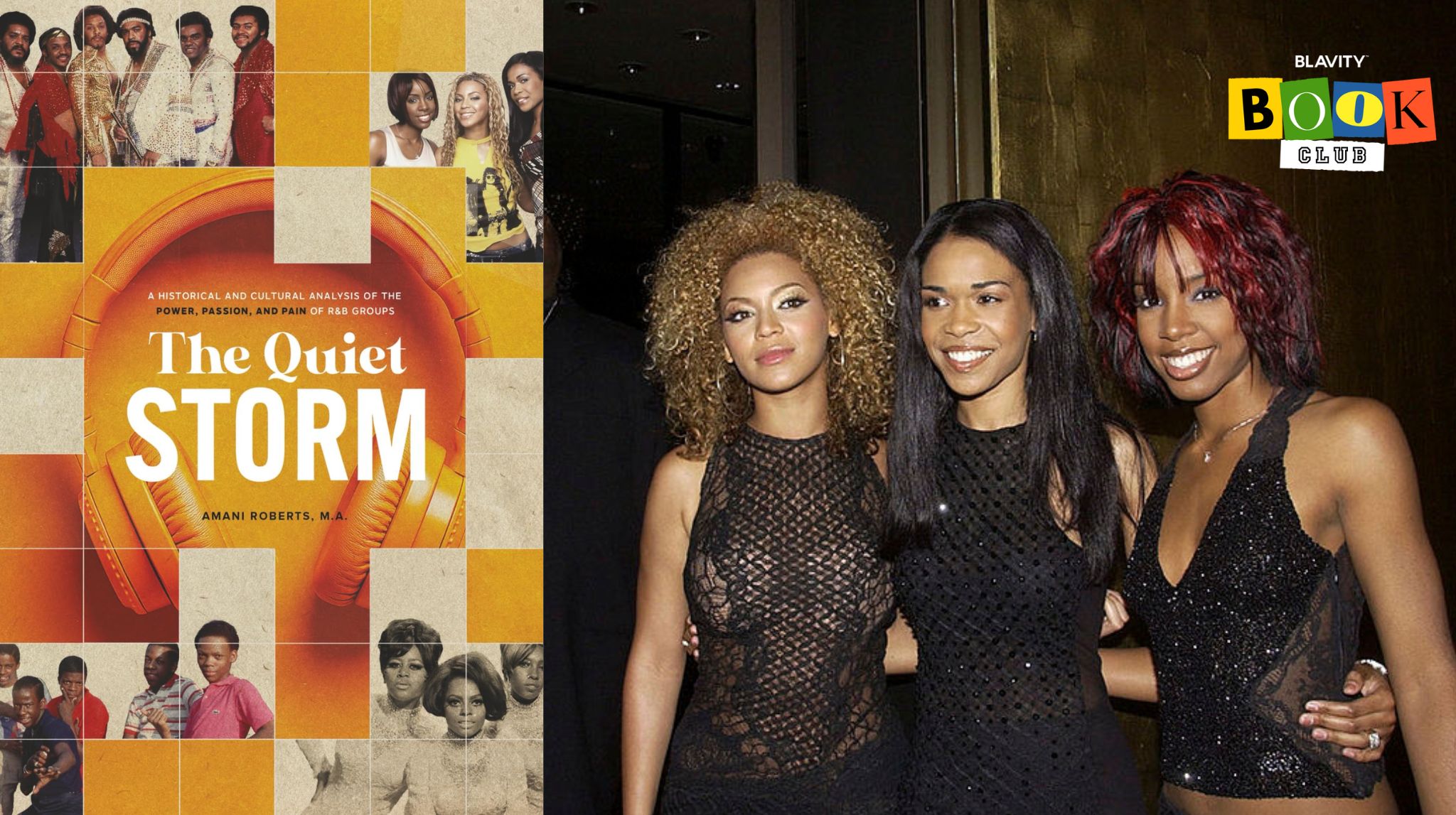It’s more important than ever to know your history, and DJ, music historian and author Amani Roberts has taken matters into his own hands when it comes to tracing the legacy of Black R&B groups.
Through his book, The Quiet Storm: A Historical and Cultural Analysis of the Power, Passion and Pain of R&B Groups, Roberts delves into the rise, dominance and decline of R&B groups while also exploring their often-overlooked yet powerful impact on American music and culture.
“I believe this was the perfect time to spotlight the legacy of Black R&B groups, as we need to recognize how much they have shaped the music culture as it is today,” Roberts told Blavity in a recent interview.
“Rock and roll, pop, and numerous other genres were formed as derivatives of R&B music,” he continued. “The success of K-pop groups would not be what it is today if it weren’t for the blueprint that the Black R&B groups exemplified during the golden era of R&B. Also, there isn’t a book that exists that reviews the history of R&B groups by decade and highlights their impact on global culture. We need more books that celebrate groups and individual acts in the R&B space.”
From The Temptations to TLC, these weren’t groups that were only making hits; they were also using their platforms to shape culture and allow listeners, especially those who looked like them, to understand that their circumstances were more alike than different. If it wasn’t powerful anthems like “Keep On Pushing” and “People Get Ready” from the Impressions during the Civil Rights Movement, there are also fashion statements and a level of fearlessness possessed by R&B groups over the decades that was just as influential as the music.
“There are many ways they have influenced how we see ourselves as Black folks. From the fashion statements that were made, to being outspoken about issues in the world, particularly during the 1960s and 1970s, to being vulnerable while discussing love and relationships,” Roberts said. “These groups exemplified a level of fearlessness that was unprecedented at the times when they were popular. When you think of groups taking creative risks, I look at Earth, Wind & Fire and how they used a magician (David Copperfield) to make their live shows memorable and can’t-miss events.”
He added, “Black people are some of the most creative people in the world, and this was on display throughout R&B’s history. We see ourselves as an incredibly resilient group of people, starting from the Middle Passage. Within R&B groups, this was shown by numerous groups, none more than The Whispers. This group stayed at their craft for over 23 years, from their first single release in 1964 to when they achieved a goal they had set: to get a Billboard Hot 100 Top 10 hit (“Rock Steady” in 1987). Can you imagine any group in our current environment sticking with their craft for 23 years to accomplish a goal?”
Does Roberts think R&B groups can make a comeback?
Throughout The Quiet Storm, Roberts delves deeply into the history of R&B groups, particularly the boom that occurred during the 1990s. While he doesn’t believe they’ll ever return to the heyday of that special decade, he is hopeful there will be other ways for current acts to come together to create art that lasts forever.
“The hope is that we have more groups like Silk Sonic, which takes two (or more) established musicians and have them form a group, release a few albums, and then maybe return to doing solo projects as well,” Roberts suggested. “Can you imagine a group made up of Leela James, SZA, Jazmine Sullivan and Muni Long? That would be amazing.”
On carrying the legacy forward
In terms of those who use their platforms to continue to expand the history of the R&B genre, Roberts took a moment to highlight singers Tank and J. Valentine’s R&B Money Podcast.
“This is quickly becoming a safe space where R&B artists can share their stories, the ups and downs of their careers, and the lessons they’ve learned,” Roberts mentioned. “I highlight them because when artists share the inside information about the industry, it helps other artists learn and reflect on their current career trajectory.”
“They are definitely pushing the legacy forward. I also want to highlight all the legacy R&B groups that are still out there performing and creating new music,” Roberts concluded. “New Edition, The Isley Brothers, The Whispers, and SWV are just a few of many legacy R&B groups who are still out there putting in the work. There are some newer groups, like FLO, WanMor, and Chloe x Halle, who are putting out great music. We just need more. Look at the mid-1990s, and count how many R&B groups were dominating the charts. We didn’t realize how good we had it back then in terms of R&B groups.”
Another truth he hopes the younger generation takes away from The Quiet Storm is that the bulk of the music that they love across all genres stems from the foundation of Black music.
Amani Roberts’ The Quiet Storm: A Historical and Cultural Analysis of the Power, Passion and Pain of R&B Groups is available online and in bookstores.

